Topeka Zoo's Sumatran tiger program is critical to species survival. Here's why
Love is in the air at the Topeka Zoo's tiger exhibit.
The zoo's one male tiger and one female tiger rubbed up passionately against each other Thursday morning through the openings in the stainless steel mesh that separates them.
"Oh my gosh, make it stop!" zoo curator Shanna Simpson jokingly exclaimed.
Their rubbing together is a sign that the tigers may soon be ready to make baby tigers, she said.
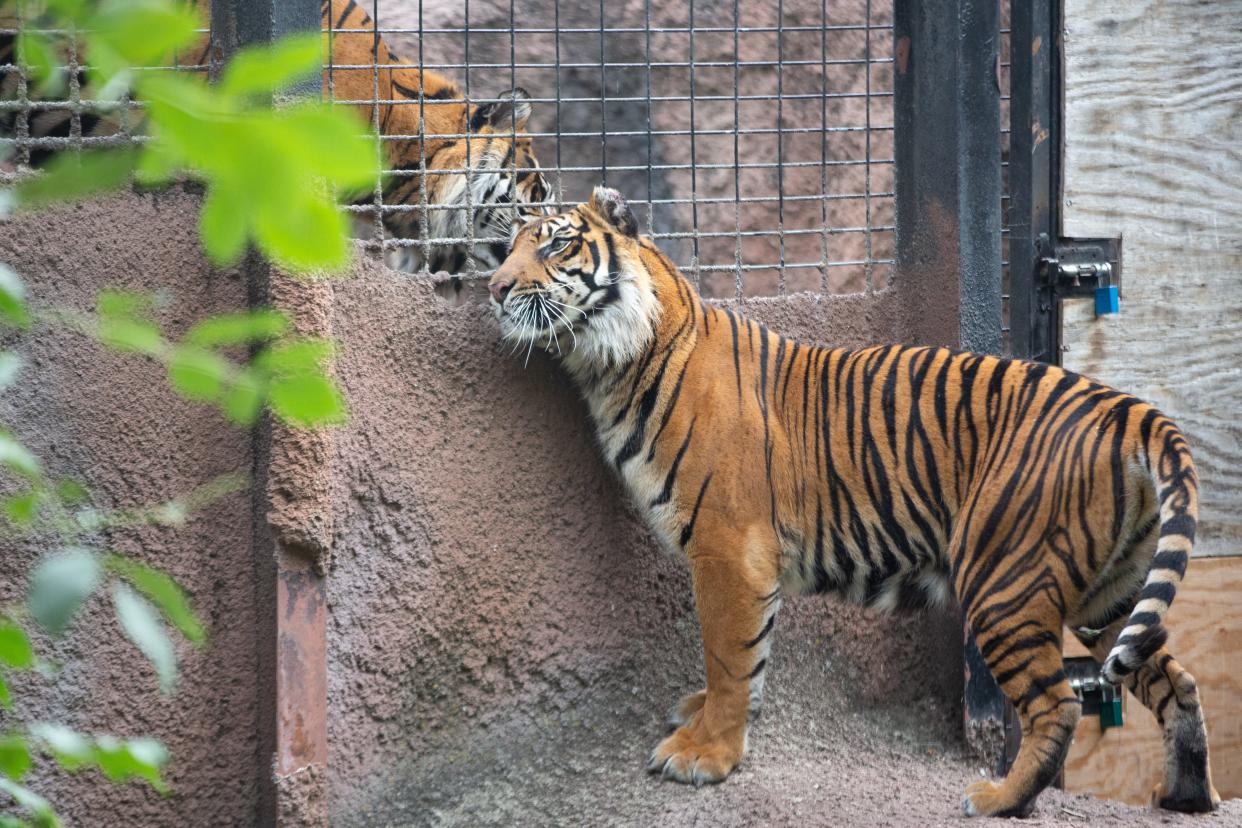
Topeka Zoo to offer tiger-related activities Saturday
Saturday is "World Tiger Day," which gives people one more reason to go see the zoo's Sumatran tigers, an 11-year-old male named Thomas and a 7-year-old female named Kinleigh-Rose, whose nickname is Nisha.
Sumatran tigers tend to be solitary animals who only come together to breed.
The Topeka Zoo will celebrate Saturday by offering chats with tiger keepers, tiger enrichment activities and special tiger crafts for children, Simpson said.
AZA depends on Topeka Zoo, which is a 'nice compliment' for it
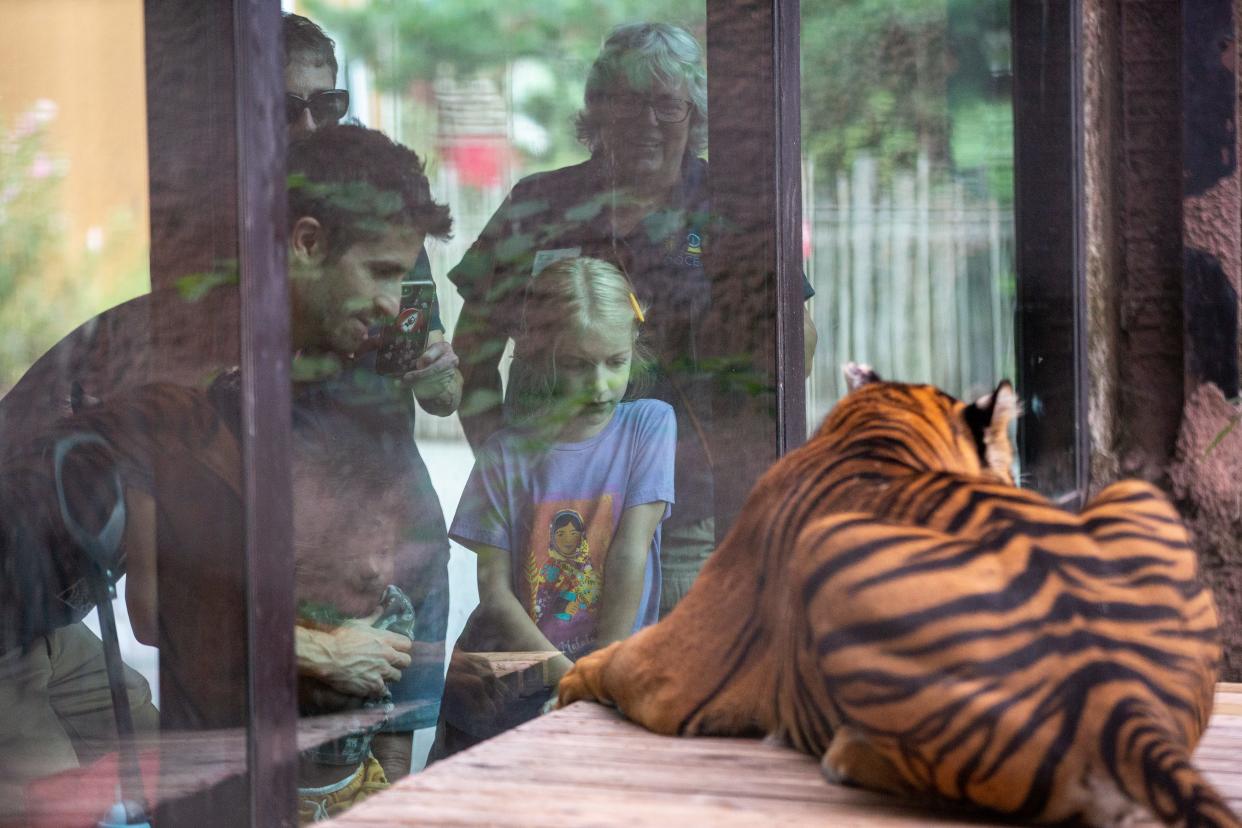
Thomas and Nisha came to Topeka early this year as part of the species survival program maintained by the Association of Zoos & Aquarium.
That program is a partnership between zoos aimed at increasing animal populations while ensuring healthy genetic diversity.
The AZA sends Sumatran tigers to Topeka when the need is becoming urgent to get their genetics into the nation's zoo population, "which is a nice compliment" for the Topeka Zoo, said zoo director Brendan Wiley.
Here's how Topeka zookeepers know tigers are eager to mate
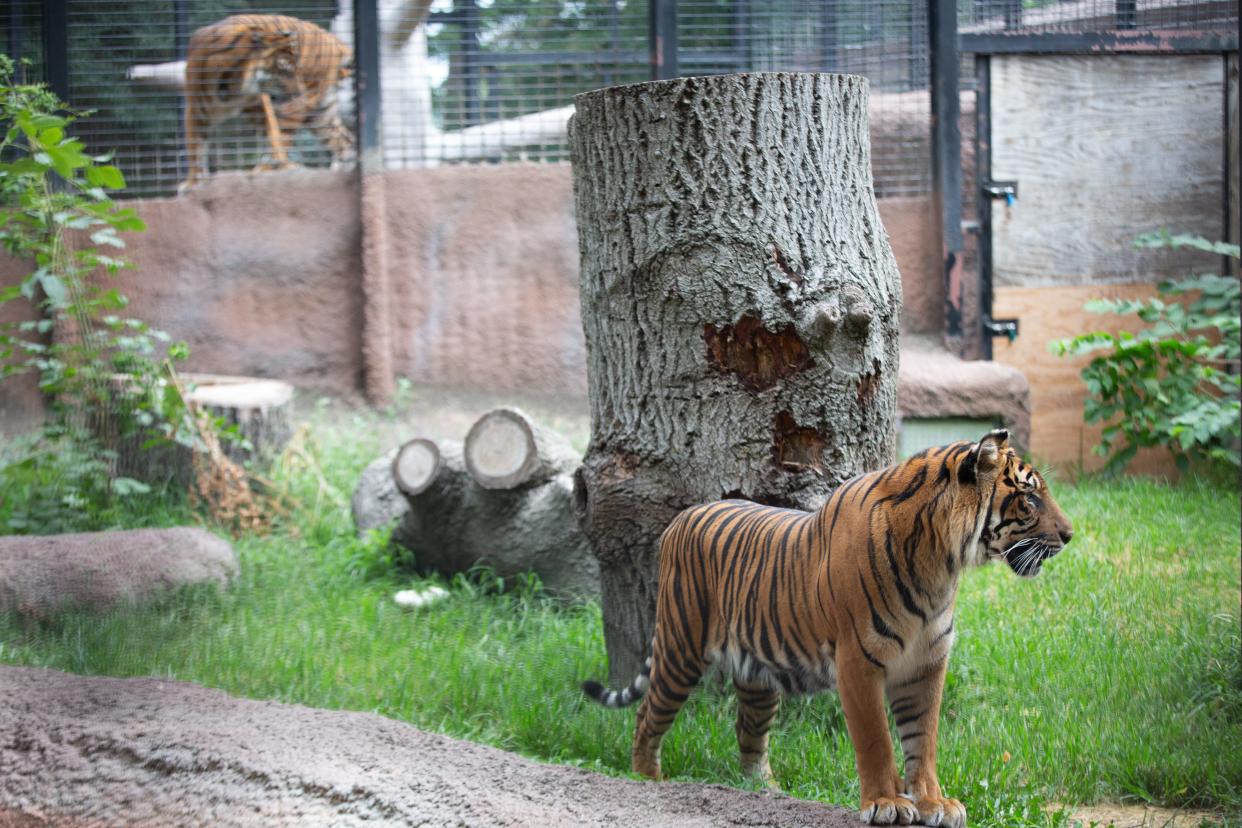
Both Topeka Zoo tigers live in a climate-controlled building on the zoo's eastern edge, near S.W. Gage Boulevard, and are allowed outdoors into their exhibit during the day.
Thomas lives alone on the north side of the exhibit while Nisha lives alone on its south side, Wiley said.
Thomas roared soon after venturing outside Thursday morning.
"He's basically calling for the female," Simpson said.
Nisha, who was still indoors, roared back.
After Nisha was let outside, she started rolling in the grass and lifting up her tail.
"Those are indicators that she's coming into her heat cycle," Simpson said.
Trying to mate tigers can prove fatal for the female
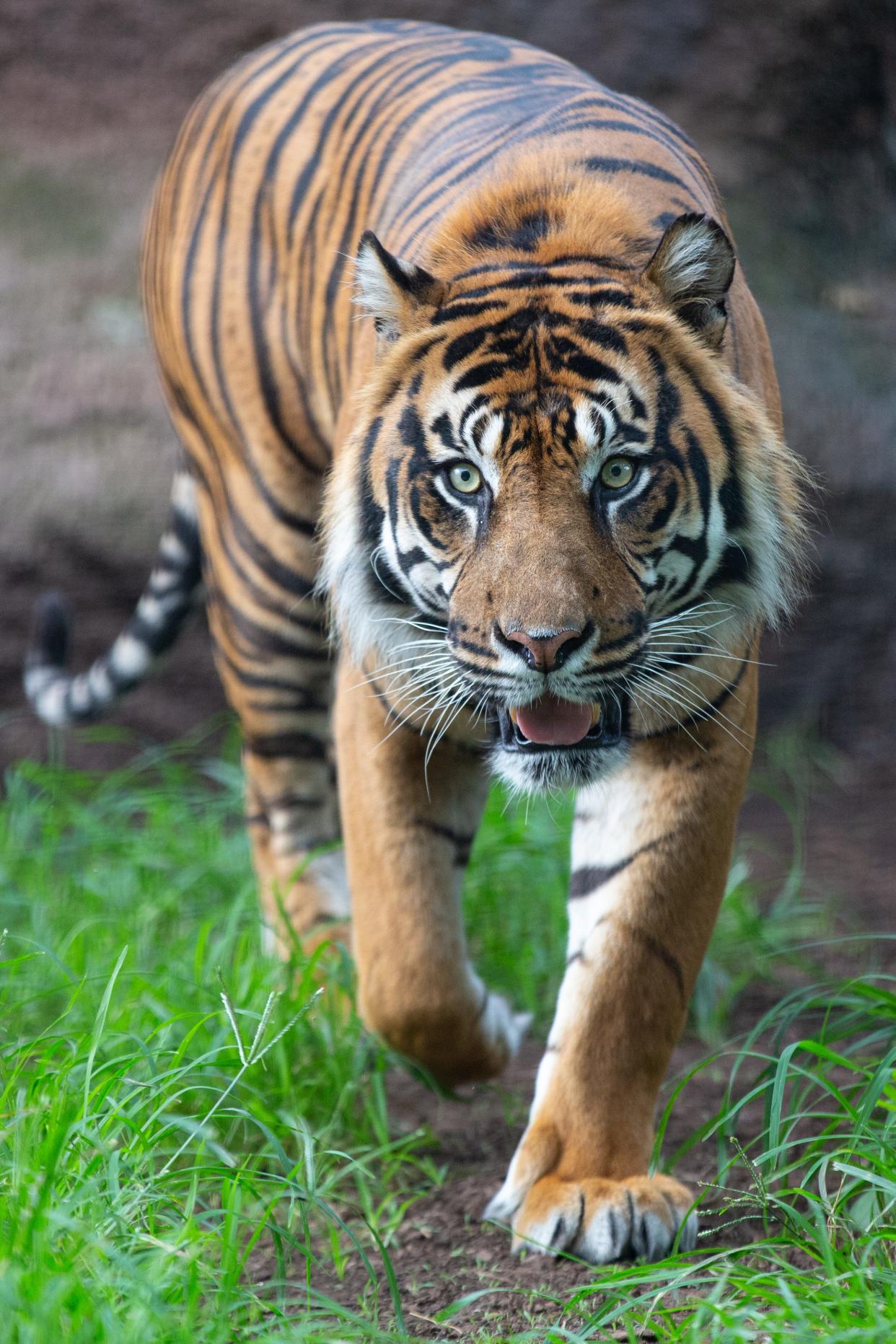
The zoo in recent months has tested Nisha's feces for hormones three times a week to identify when she's "in heat," the state of excitement immediately preceding the period when she is most fertile, Simpson said.
"We do think she's coming into a heat cycle now," she said. "We basically need to know exactly when she's in heat, because that's when you put tigers together."
Getting tigers to mate can be tricky, because the males at other zoos sometimes kill the females when they're put together, Simpson said.
"I wouldn't say it's common, but it does happen, so we just have to make sure that we're really careful and we're reading their behavior accurately," she said.
More than 10% of Sumatran tigers in U.S. zoos were born in Topeka
Sumatran tigers are the smallest of the tiger subspecies, and live only on the Asian island of Sumatra. They are considered to be critically endangered. About 400 are thought to remain in the wild, Simpson said.
Sumatran tigers can live up to 25 years in captivity.
Of the roughly 68 Sumatran tigers living in zoos throughout the U.S., seven were born in Topeka — three in 2014 and four in 2018, Simpson said. The females generally give birth to between one and five cubs at a time, she said.
The Topeka Zoo's last tiger couple — Jingga, who was already a mother of three, and Sanjiv, a male who was inexperienced at mating — successfully mated on their first day together before Jingga had four cubs in 2018.
Sanjiv made news the following year when he injured one of his keepers.
Thomas and Nisha are inexperienced at mating, Simpson said. They were allowed to be together in the same area at the same time for the first time on Friday, when zookeepers ”saw some sparks” but the two did not successfully mate, the zoo said on its Facebook page.
Topeka Zoo tigers get a weekly special treat from Blind Tiger Brewery
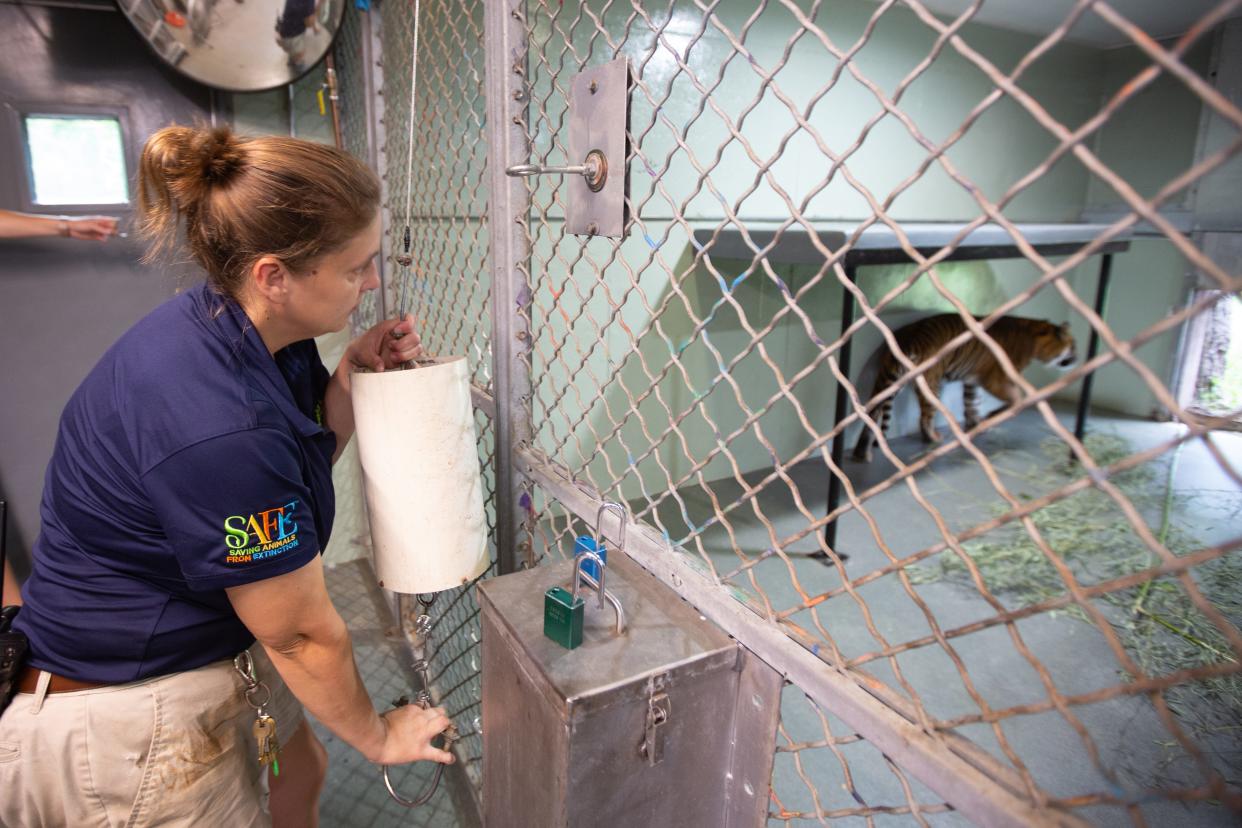
Male tigers generally weigh about 300 pounds each and are bigger than females, who generally weigh about 200 pounds, said zookeeper Erin Day.
Thomas is average-sized for a male tiger while Nisha is small for a female, she said.
Thomas and Nisha are usually fed raw meat twice a day, once each before and after noon, Day said.
Once a week, each tiger gets a femur bone from one of the bison killed to make bison burgers served at Blind Tiger Brewery & Restaurant, 417 S.W. 37th, which donates portions of its proceeds to sponsor the tiger exhibit.
The zoo also treats the tigers to iced treats called "bloodsicles," which are carnivorous versions of the popsicle, Simpson said.
Why should Topekans care about Sumatran tigers?
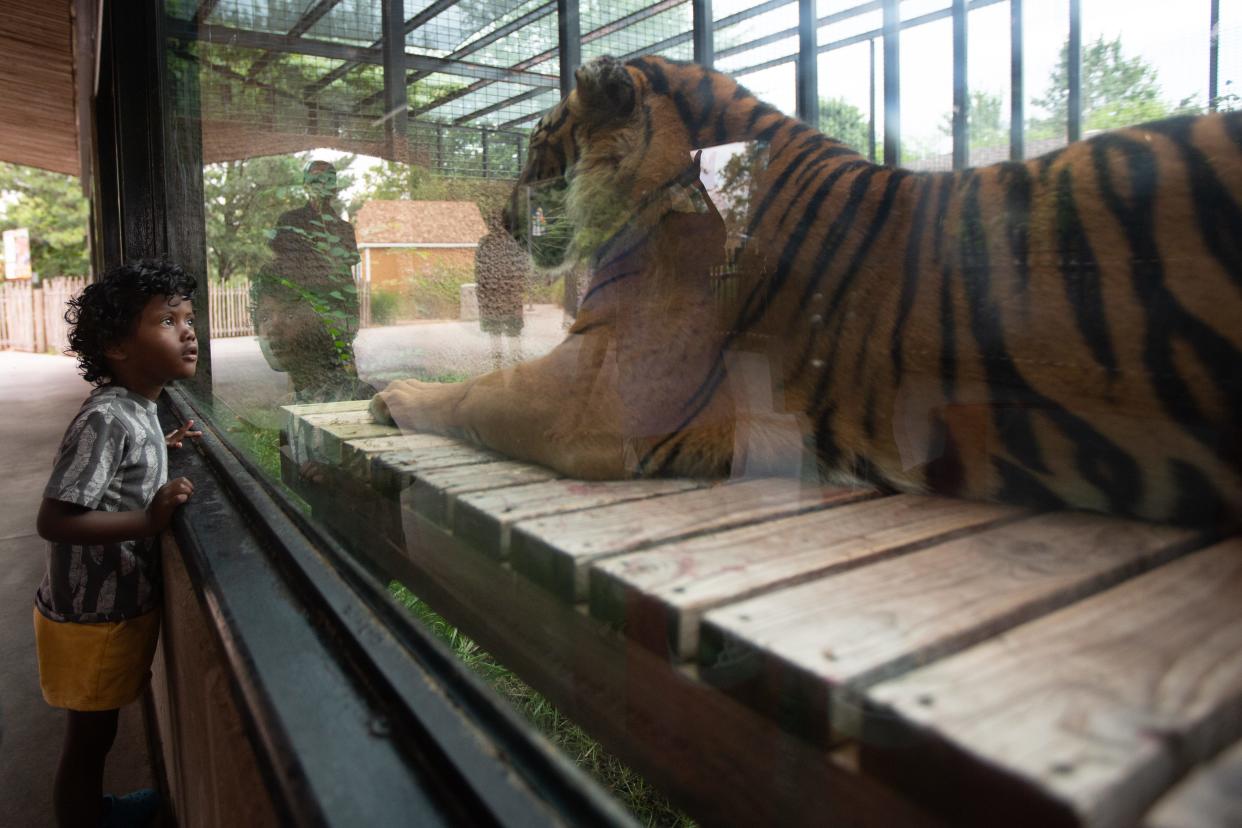
The zoo encourages Topekans to support Sumatran tigers by recycling — which helps the environment in general — and by supporting the zoo, for which a good part of its budget goes toward conservation.
"We actually pay the salary of a tiger conservationist in Sumatra, who looks for snares and helps stop poachers," Simpson said. "So just by coming to the zoo, you're actually helping support tiger conservation."
The zoo's master plan calls for it to replace the current tiger exhibit near the end of this decade with another, which will be larger and feature outdoor space that's more like a Sumatran tiger's natural habitat, Wiley said.
He anticipates that exhibit will be in the northern part of the zoo, where a larger amount of space is available.
Contact Tim Hrenchir at threnchir@gannett.com or 785-213-5934.
This article originally appeared on Topeka Capital-Journal: Topeka has become the US hotspot where Sumatran tigers come to mate


